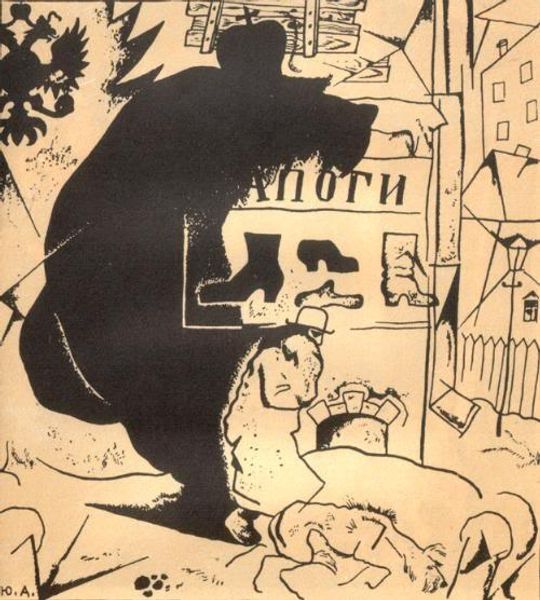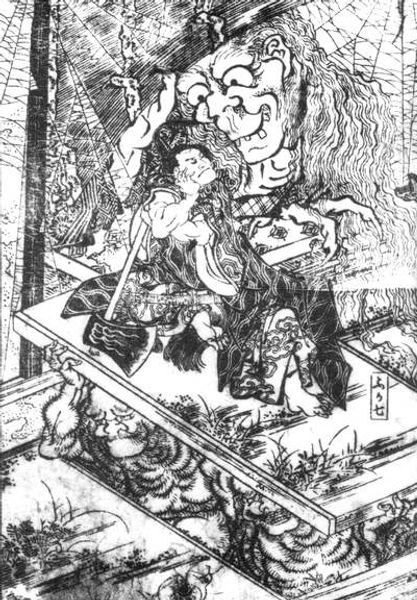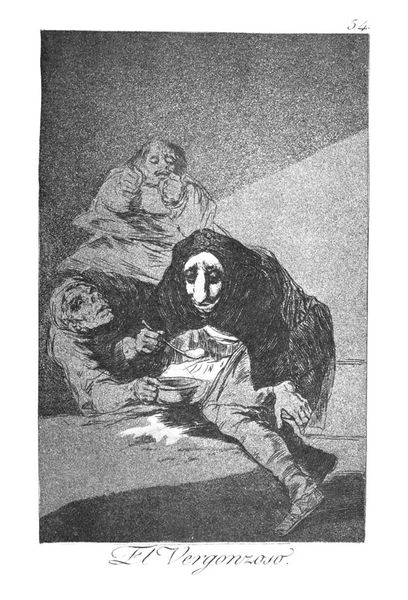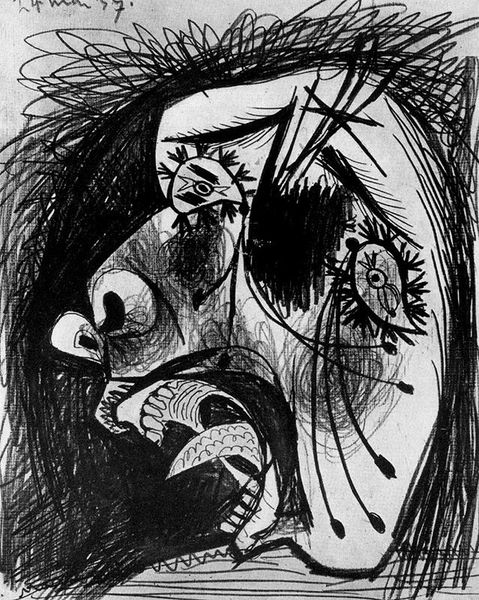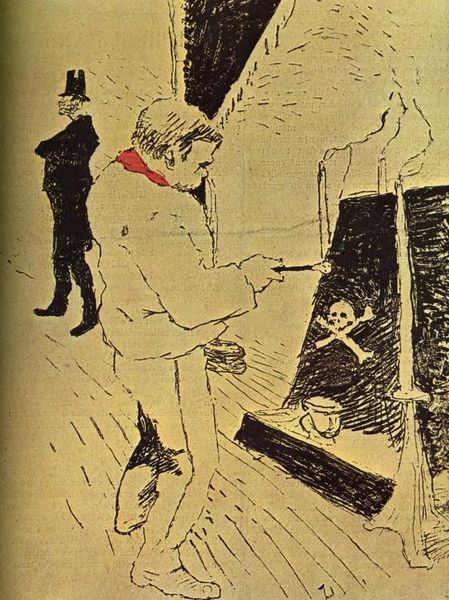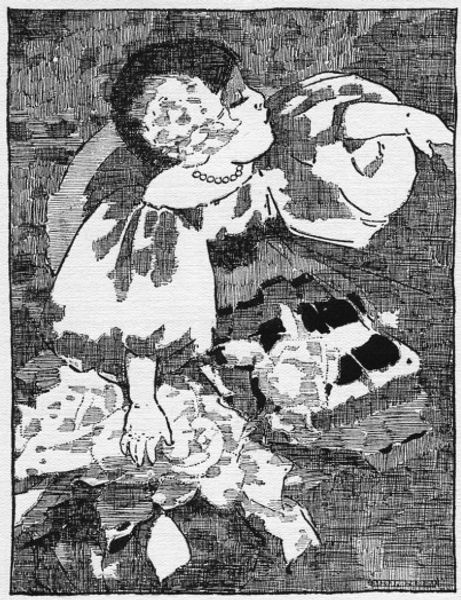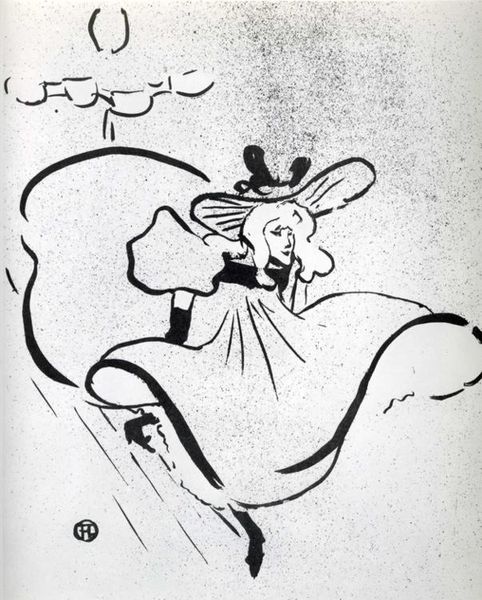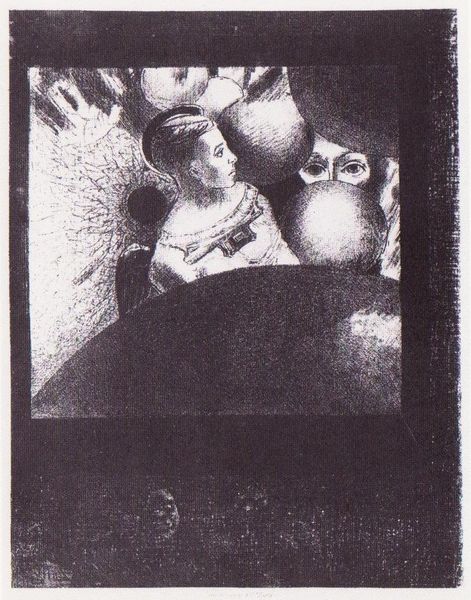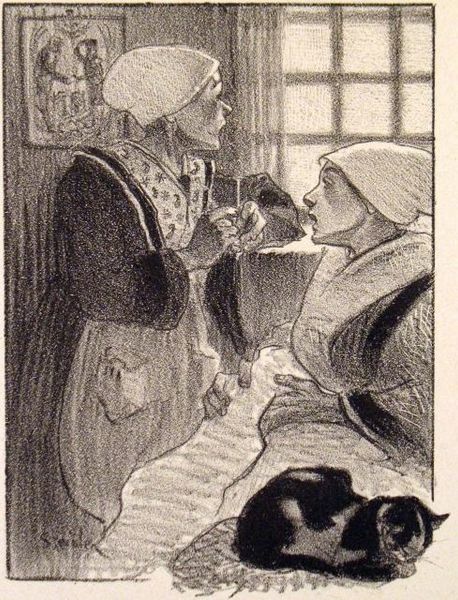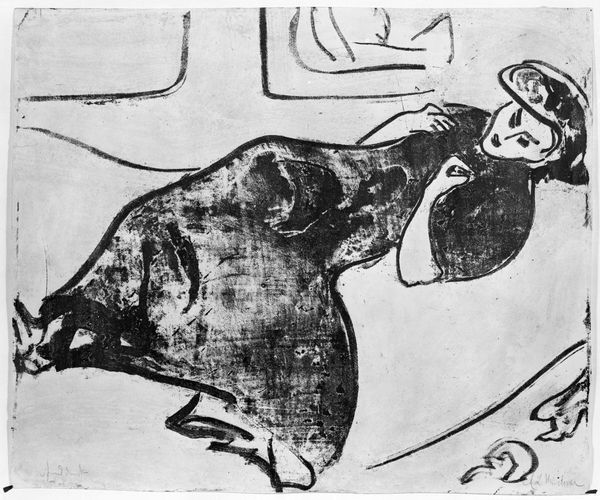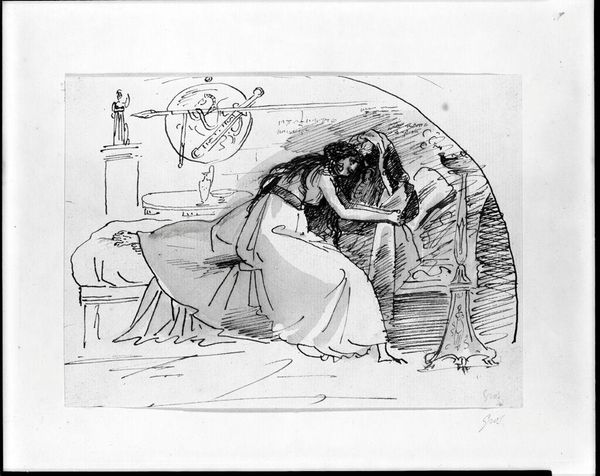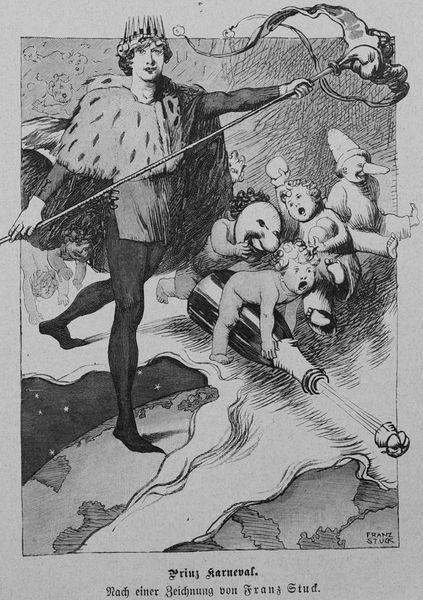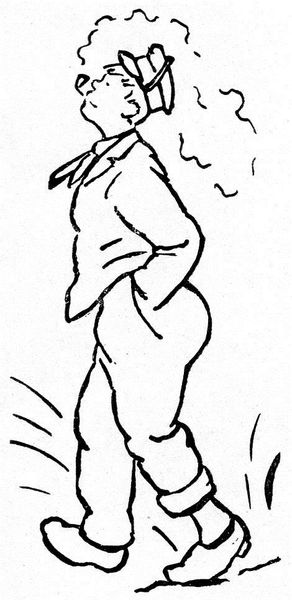
Copyright: Public domain
Curator: This lithograph by Henri de Toulouse-Lautrec is titled "Carnot Malade Cannot Ill, a Song Sung at the Chat Noir," created in 1893 using pen and ink. My first impression? It feels very bleak. There's a real sense of morbidity and despair radiating from it. Editor: It does evoke a somber mood. Let's unpack the context here. Sadi Carnot, the French president, was assassinated in 1894. Lautrec made this print in anticipation of, perhaps, political anxiety during his reign as president. This premonition adds another layer of depth to the work. Considering France's tumultuous political climate at the time, it's reasonable to feel the work expresses a cultural dread. Curator: Precisely! This isn't just a portrait of illness; it’s an allegorical statement on the ailing state of France itself. I also note the way the materials contribute to this feel, specifically how his rapid pen strokes, used to create shadows and highlights, are more gestural and seem to speak of something unfinished or disturbed. Editor: The stark black and white of the lithograph, with its somewhat raw, almost unfinished feel, further reinforces the sense of unease. The textures achieved through the lithographic process speak of labor and production. Think about the political discourse at the cabaret. Perhaps, Lautrec felt he, through the making of this work, could effect some material consequence. Curator: Right, we can situate Lautrec's imagery within the rise of social critique that emerged out of spaces such as the Chat Noir. The print reflects not just Carnot’s individual decline, but a wider sense of collective fragility and historical anxiety, and is further relevant due to our own present moment’s reckoning with institutional vulnerability and grief during this moment of political reckoning in the modern era. Editor: Agreed. It highlights how materials and methods of production and reproduction—like lithography, which democratizes art—were bound up in social issues of the time, influencing political opinion and social commentary. The scale of the production makes the social critique so palpable. Curator: This piece stands as a testament to the intersection of art and socio-political reflection during this era of significant social and political shifts. The political discourse of this era is inscribed into the medium itself, and as a viewer of art, I'm inclined to ponder the degree to which it influenced the state’s own anxiety. Editor: Indeed. Thinking through Lautrec's material processes deepens our knowledge of art as an object embedded in wider social contexts. A print isn’t simply a thing to be looked at; it is a physical product of ideas, available for wide distribution and critical exchange.
Comments
No comments
Be the first to comment and join the conversation on the ultimate creative platform.
